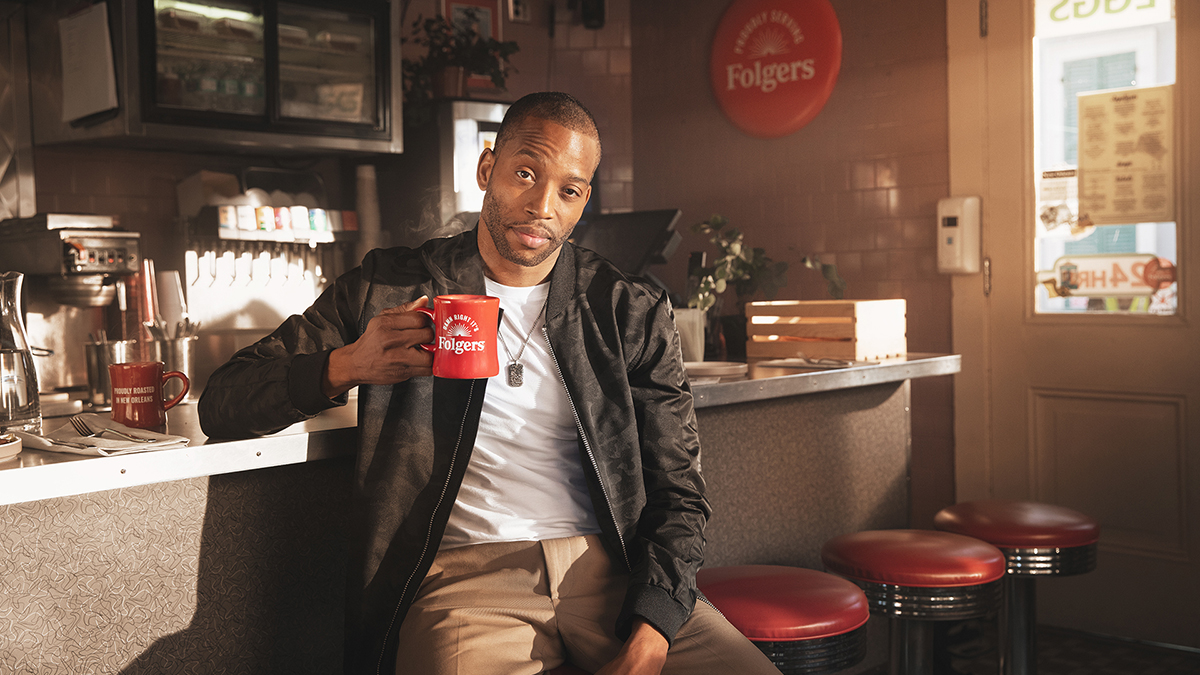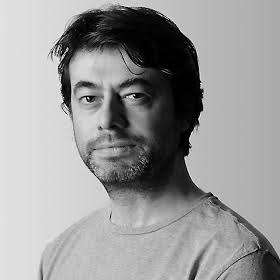Trombone Shorty: “In other places it might be guitars and all that stuff, but in New Orleans, brass is the king”
From playing for presidents to jamming with the greats. You name it, Shorty’s on the track...

Trombone Shorty - AKA multi-instrumentalist Troy Andrews - sprang from one of New Orleans’ most legendary jazz legacies to become the crossover star that the big names just love to jam with.
Fusing his jazz heritage with blues, rock, pop and more in countless collaborations, it seems there’s no genre of music and no single track that can’t be enhanced with a little Shorty on board.
From rock acts such as U2, Aerosmith and Green Day to jazz greats such as Pee Wee Ellis, Maceo Parker and Fred Wesley, Shorty has played with them all.
And as a fearless and tireless charity campaigner for New Orleans and the star of a new TV ad campaign for classic US brand Folgers, Shorty cements the brand’s heritage at the heart of jazz culture with a history that’s as locked-in as his own.
How do you prepare for a session? What do you always do before you work with someone for the first time?
“Well, I’m blessed to be a fan of a lot of music. So a lot of artists I’ve worked with, I’ve already been listening to their music as a fan. And if I don’t know their music I’ll listen to a bit of it just to be aware of what kind of rhythms they usually play.
“Being from New Orleans sometimes we just go in cold and we just add what we do to it, without that much thinking. So it happens in all types of settings. It’s just however it feels that day.
Want all the hottest music and gear news, reviews, deals, features and more, direct to your inbox? Sign up here.
“I’ve been in sessions where we’ve had no idea of what we’re going to do, and sometimes the artist is making music that’s completely different to what they’d normally do. So it’s always different.”
You’ve worked in so many styles - some real melding of the jazz and rock worlds. So are you fitting in with them or are they fitting in with you?
“It’s just music, you know? It’s just the language of music that’s all connected, coming together without any names on. It’s just the spirit of music working together. We go in like that.
“It’s easy for me to jump on any style of music and add what we do on top. So it may be both - it’s them adding with me and me adding with them. I just go in there and try to do what I do, and not take away from them, but put our New Orleans stamp on top of it.”

What is it that you bring to a session that nobody else can bring?
“I’m still trying to figure that out! [laughs] I think people can see my love for all styles of music, especially coming from the melting pot of New Orleans. We call it New Orleans music because we have all styles of music and all the sub-genres of music.
“I’ve worked with a lot of people in New Orleans that represent all the different styles of this music. From rock ‘n’ roll to hip-hop, funk to R&B and jazz, and they’ve been very good at working with their particular interpretation of New Orleans music.
“So when I get called by artists from all around the world I’ve already had some experience playing those styles, while they’ve had some kind of influence from New Orleans.
“It goes back to Fats Domino, to Louis Armstrong. From the Neville Brothers to Cowboy Mouth. Whoever it may be, it makes them want to work with me because I come from that long lineage of music.”
So, to take it back to the start, why horns? What is it about horns that got you started?
“Well, you know, I didn’t have a choice. I grew up in the brass band community in New Orleans. There’s about 100 brass bands in New Orleans and I have at least one family member in 95 of them. My older brother plays the trumpet and I have cousins that play with Dirty Dozen. I didn’t really have a choice. It was all around my house.
“I picked up a trombone and started playing when I was four. In other places it might be guitars and all that stuff, but in New Orleans, brass is the king. I’d see people playing in the street… kids playing at the bus stop on the way to school… The brass horns here are the number one thing.”
But a trombone isn’t the kind of thing you’d expect a little kid to pick up.
“Not at all! It’s very heavy. When I was very small my mom would walk alongside of me and hold onto me because she thought I would tilt right over and fall on the ground. It’s not a horn that you see kids pick up. I could only reach three of the seven positions on it because my arms couldn’t go that far.
“I had to learn and improvise without even knowing I was improvising - just to get those other notes. I found ways to manipulate it with my lip, but I didn’t know that at the time. I was just hearing things and I wanted to be able to copy the people I was standing next to.”
What was your first big break? And how much did luck or skill play a part in that?
“My brother had me on his side since I was four and I played a thousand gigs - from birthday parties, to jazz funerals, to stadiums. I wouldn’t know which point was my first big break. I was too young.”
So you must have favourite instruments? And are they insured for millions of dollars?
“Well, I have them insured, but not for that much! When I go on tour they have a lot of wear and tear on ‘em because pre-Covid we were doing 200-plus shows a year. When I come home there’s a set that I use all the time because you get used to them. You break them in. And then they become easy to use and play.
“Every couple of years I have the horn company at Edwards Instruments send me a new replacement. But it’s the same horn. Just a newer version of it. The trumpet is a Generation X, and the trombone is just a Tenor trombone.”
What about more technical stuff? When you’re recording do you let the engineer do all the heavy lifting or do you like to get involved?
“Nah, I like to be involved with everything. I’ll be giving him some pointers. When he’s in the control room, I’ll be in the live room, playing, and I’ll be telling him in that moment what I want to do, so I’m very involved. And after I’ve played I’ll go up and we’ll tweak some things if we need to, but I love to be a student.
“The engineer… Of course he knows much more than me about recording. He’ll tell me the proper name for it or whatever but I like to be involved in every sense. Helping out or just sitting back and learning as a student.”
There’s a track by Chris Royal called Insomnia that you’re on. That’s an amazing new, electronic landscape for a brass recording.
“Well, Chris plays the saxophone and we went to NOCCA together - New Orleans Centre For Creative Art - and he engineered that track. So he recorded himself and recorded me. I was very surprised he didn’t have an engineer that day ‘cos he knows how to do it himself.”
There’s some insane soloing around the 5 minute mark. It’s incredible.
“Yeah, yeah. Sometimes we record it and we almost forget that it happened because we’re moving so much. But I remember the session and how intricate it was. Sometimes I go in there and the first solo I do is probably the one that I’ll use. Because it just felt good.
“Then you start to nit-pick things: I should do it again, and do it again… Because it’s on the record you want to sound decent on it because it’s gonna be there forever.
“Sometimes I go in there and play and they say ‘That’s the one’ and I think ‘No, I can do better’ and then you start to overthink and overthink… But I always keep that first take because that’s something natural. Without thinking - it happens. You just go do that.
“As a horn player, with that lip, you might get excited and not hit a note right but the rest of it might be ‘wow’… You might just want to touch that one note up, but you should leave it there because it’s just honest. I might do five or six passes but I always keep that first one.”
And your latest project is with a great New Orleans brand - Folgers Coffee. You even appear in the ad?
“Yes, yes. It was a lot of fun. A lot of my friends are on the set and I hadn’t seen them in months or years. It’s a bold, unapologetic commercial and I’m very proud to be representing New Orleans. Having Folgers, a local brand, showcasing local talent and putting us on the map. It’s a beautiful thing from all corners musically and visually. I’m very excited about it.”
Daniel Griffiths is a veteran journalist who has worked on some of the biggest entertainment, tech and home brands in the world. He's interviewed countless big names, and covered countless new releases in the fields of music, videogames, movies, tech, gadgets, home improvement, self build, interiors and garden design. He’s the ex-Editor of Future Music and ex-Group Editor-in-Chief of Electronic Musician, Guitarist, Guitar World, Computer Music and more. He renovates property and writes for MusicRadar.com.
